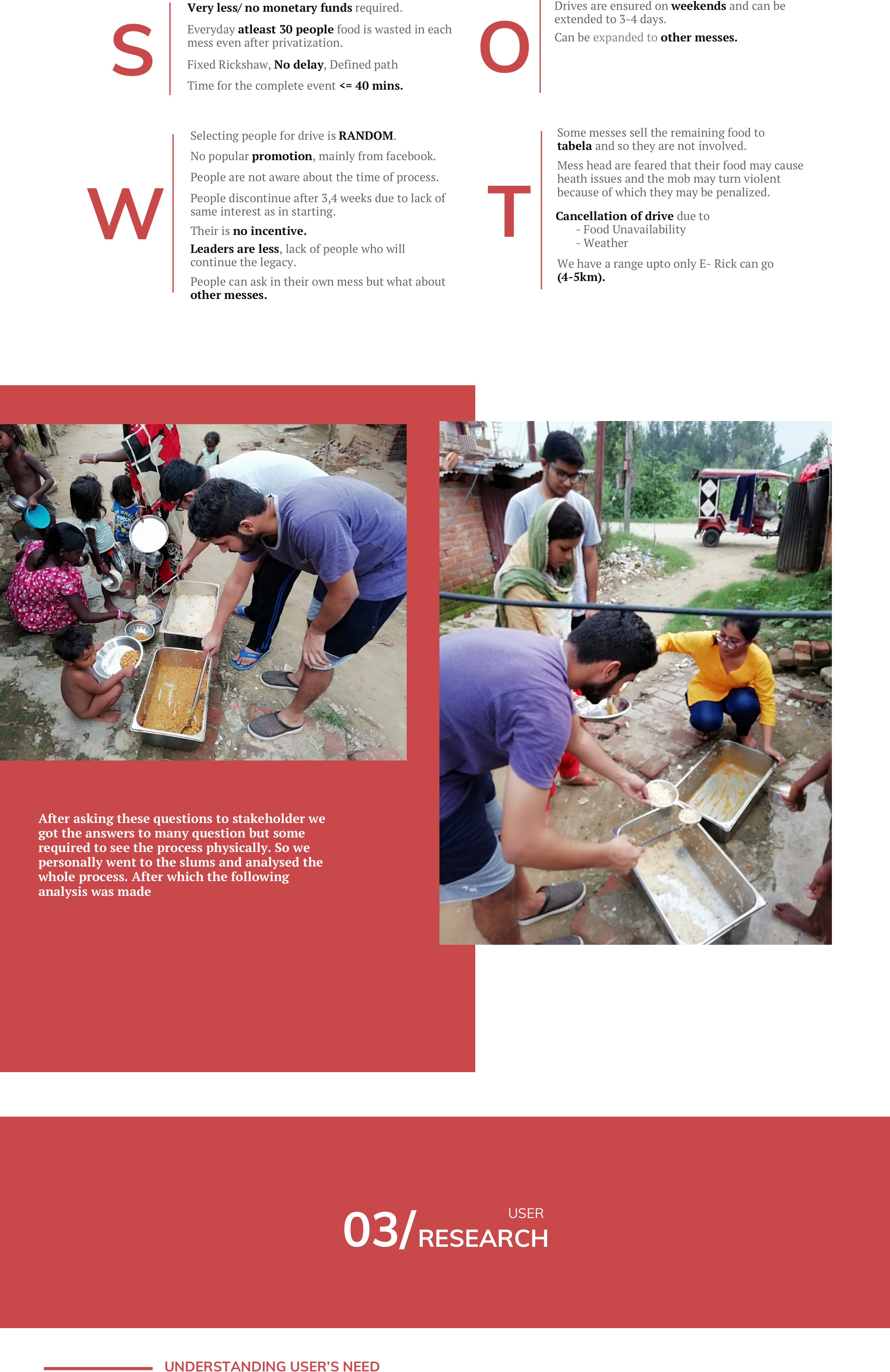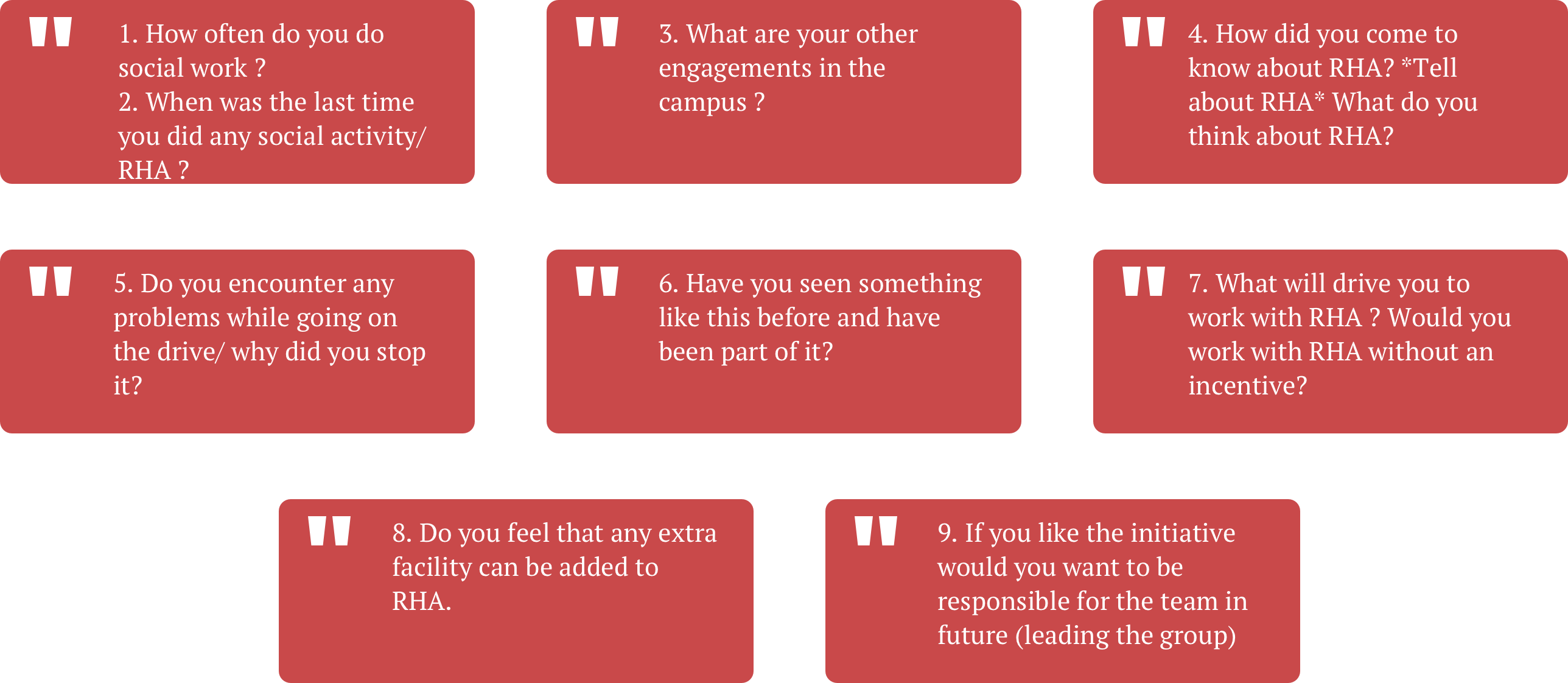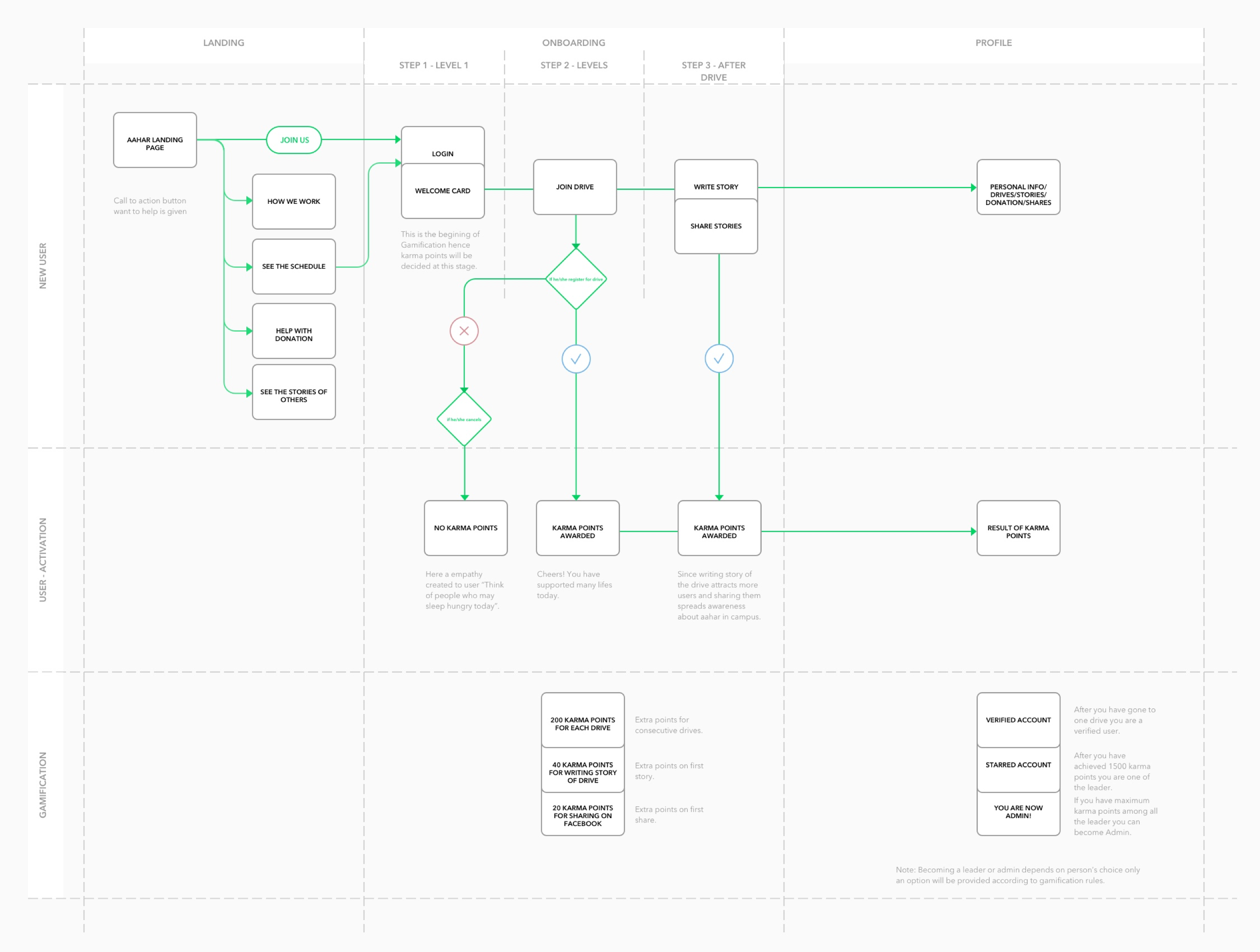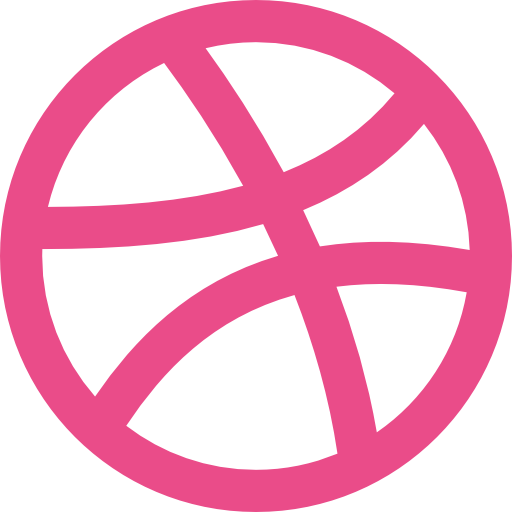Understanding the Situation
Tonnes of food were wasted daily in the messes of many academic institutes in India in their attempt to dine the residing students. On the worst days, more than 200 kg of food is wasted in each mess after each meal.
Compelled by this, people of Roorkee started a group called AAHAR: Action Against Hunger – A Revolution with the vision of eradicating hunger using the food which was nevertheless being thrown away. The idea was to collect the food left in different college messes and distribute it amongst the poor. Inspiration was taken from the well known Robinhood Army - an organization famous for distributing food to the poor in the entire nation and beyond.
The process for going on the drive was to fill the contact details of the volunteer on google sheets which is shared on a facebook page. Additionally, updating the drive details on WhatsApp group every Friday. The process was unorganized and on a small scale and many volunteers were used to leaving out.
Timeline(4 weeks)
Asking the right question
These inferences were drawn from research and features were noted:
- Stories of each drive should be posted in order to show recognition to people who go on drive.
-
People should be given some achievement on each drive so that they continue going to drives which can be named as “karma points”.
- It can be gamified for engaging the users and ultimate powers given to “admin” and “leaders”. As the responsibities increases the person should be awardrd with ownership for which they will be upgraded to leaders and later admin.(Gamification is been explained in the flow process below)
- The process of aahar should be well explained to avoid any confusion for newcomers.
- Schedule of drive should be posted in advance along with leader and mess details for maximum participation.
Flow process
The flow process was complicated and based on gamification to engage the user and increase participation.
Test Phase
Currently this website is under testing phase a sample website is made and is under code. We are going see the problems users are facing and accordingly gamification features will be revised and then applied.
Beta version is live, go to. :
aahar.site
Summary
On summarising my design process I came across these steps which taught me how real life problem exist and can be solved through our knowlegde of design.
My learnings:
- While preforming user research I understood how questions should be asked to the users in a conversation.
- Doubts and Information should be sorted according to SWOT analysis.
- Stakeholders and Users should be given equal status but ultimate goal should be achieved from Stakeholder’s perspective trying to meet needs of user.
- Gamification is a method to show your progress not just a game to play. Many websites use this technique to enhance user engagements.
- For making a full working website you need to focus on each and every step user will take or leave even mentioning the edge cases.















